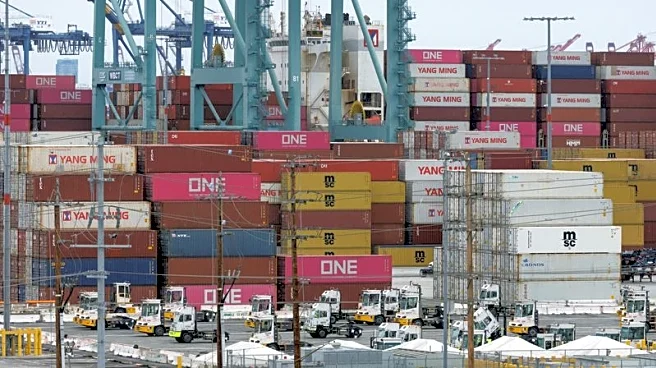What's Happening?
The White House has officially removed the de minimis exemption, which previously allowed shipments under $800 to enter the United States without tariffs, taxes, or duties. This change, enacted through a late-July executive order, aims to address the significant increase in de minimis shipments, which rose from 134 million in 2015 to over 1.36 billion by 2024. The removal requires all low-value shipments to undergo formal customs entry, impacting logistics operations and costs. A survey by Logistics Management revealed mixed reactions from industry stakeholders, with 32% reporting operational impacts such as increased costs and slower deliveries, while 46% noted no impact.
Why It's Important?
The removal of the de minimis exemption is a significant shift in U.S. trade policy, affecting logistics and supply chain operations. It introduces new cost layers for businesses that relied on the exemption for low-value shipments, potentially increasing product prices and altering shipping strategies. This change could favor larger companies with the resources to adapt to the new duty-paid environment, while smaller businesses may struggle with compliance and increased costs. The policy aims to recover lost revenue for the U.S. but may lead to slower prototype turnaround and increased customs processing times.
What's Next?
Logistics operators are expected to adapt by consolidating shipments and revisiting carrier strategies to remain compliant and cost-effective. Companies may need to invest in trade-sensitive brokers familiar with the duty-paid model to navigate the new complexities. The shift could lead to market scrambling, with businesses migrating from the de minimis environment to the duty-paid model. Larger marketplaces and companies with capital and resources are likely to benefit from the change, while smaller entities may face challenges in adjusting to the new requirements.
Beyond the Headlines
The removal of the de minimis exemption highlights broader implications for international trade and logistics. It underscores the need for businesses to enhance compliance and data management capabilities, potentially leading to increased investment in technology and partnerships. The policy shift may also influence global supply chain strategies, encouraging companies to explore alternative markets or adjust pricing models to accommodate new duties. The change reflects a move towards more stringent trade regulations, impacting the dynamics of international commerce.











